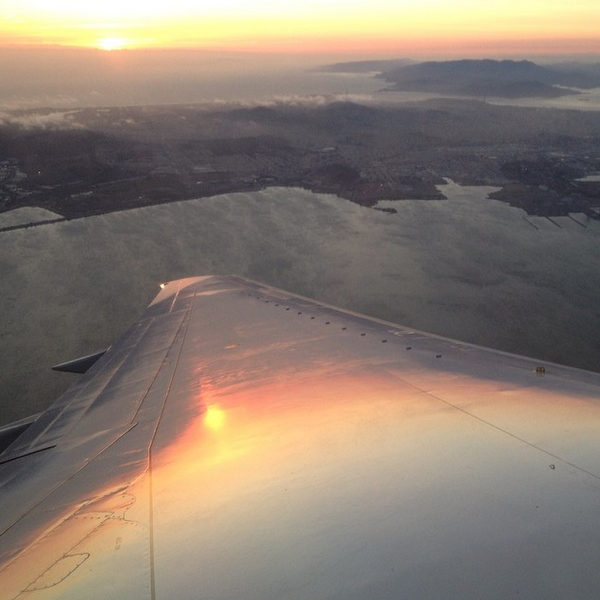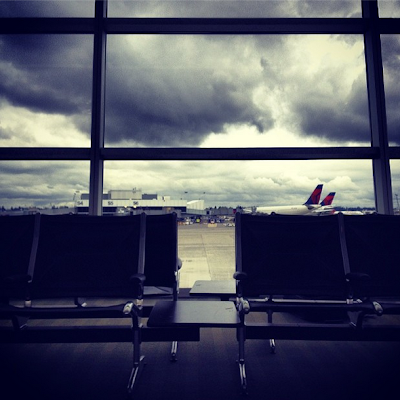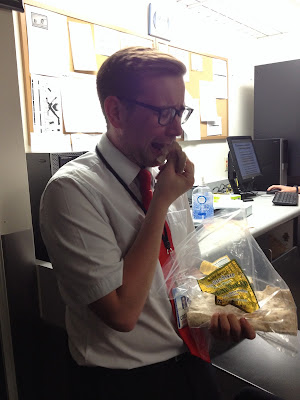First Flight.
Week One.
Today I woke up, put on my uniform, adjusted my wings and went to work in the sky.
Today was Day One of the last leg of training, the part where I am actually on a plane, in the sky, interacting with real passengers and working alongside a real crew.
Today I learned how to pour a diet Coke while 30,000 feet in the air, how to glide down the aisles during turbulence and how to handle a flight full of folks from Williston, North Dakota.
I also learned a lesson about compassion.
Right before landing on my first flight, a young man was sitting in seat 6A, clutching a duffel bag and a crumpled photograph. His tray table was down and on it were a dozen photos of a young child.
The man's head was turned away from me, and I assumed he had not heard the announcement to stow personal items for the final descent.
As I bent closer to remind him, he suddenly turned towards me and grabbed my arm.
"Please, ma'am, look at my son. Isn't he beautiful?" The man asked, voice cracking.
I nodded.
"He died last week. Him and my wife. Killed by a drunk driver."
...
Sometimes there are no words, no rules, no regulations, or standard practices for what needs to happen. Every day, we will interact with dozens of 6As, and we may never know their story or reason for flying. And whether we are invited into that story or not, we should be treating them with the utmost dignity and respect.
As this young man broke down into tears, I simply held his hand and told him his son was, indeed, beautiful.
And then I moved to the next row, regained my composure, and offered them a beverage.
Today I woke up, put on my uniform, adjusted my wings and went to work in the sky.
Today was Day One of the last leg of training, the part where I am actually on a plane, in the sky, interacting with real passengers and working alongside a real crew.
Today I learned how to pour a diet Coke while 30,000 feet in the air, how to glide down the aisles during turbulence and how to handle a flight full of folks from Williston, North Dakota.
I also learned a lesson about compassion.
Right before landing on my first flight, a young man was sitting in seat 6A, clutching a duffel bag and a crumpled photograph. His tray table was down and on it were a dozen photos of a young child.
The man's head was turned away from me, and I assumed he had not heard the announcement to stow personal items for the final descent.
As I bent closer to remind him, he suddenly turned towards me and grabbed my arm.
"Please, ma'am, look at my son. Isn't he beautiful?" The man asked, voice cracking.
I nodded.
"He died last week. Him and my wife. Killed by a drunk driver."
...
Sometimes there are no words, no rules, no regulations, or standard practices for what needs to happen. Every day, we will interact with dozens of 6As, and we may never know their story or reason for flying. And whether we are invited into that story or not, we should be treating them with the utmost dignity and respect.
As this young man broke down into tears, I simply held his hand and told him his son was, indeed, beautiful.
And then I moved to the next row, regained my composure, and offered them a beverage.




I sometimes think there is a place where beauty and love meet pain and agony. Those who experience it, like this man, evoke a sense of awe. I'm glad you were able to honor this man's suffering-you may never know how much it eased his sorrow, if but for a moment.
ReplyDelete